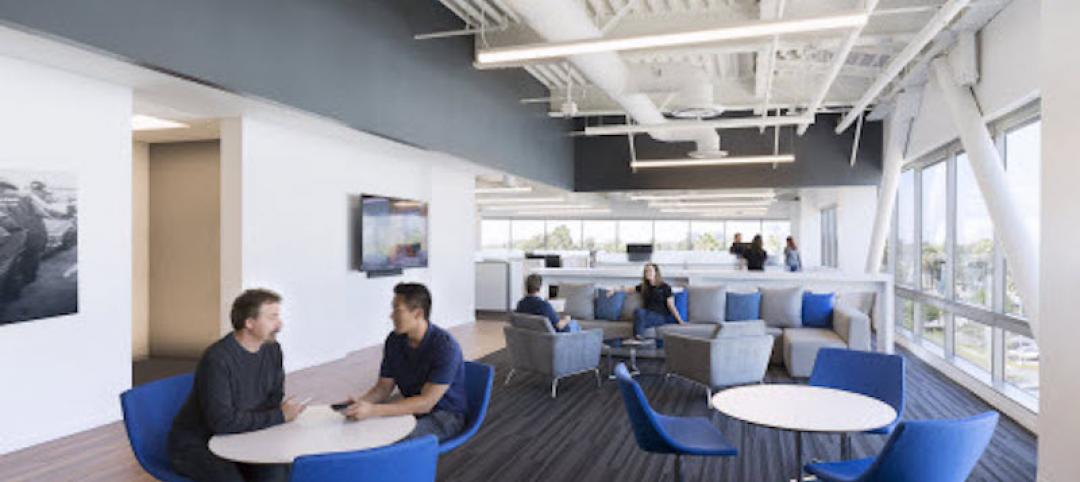Office workers value flexible working options more than any other employment benefit, but there are crucial differences between what men and women want from their employer according to new research released from Ambius, experts in interior landscaping.
A survey of 1,000 office workers in the US and UK found that men value health insurance above any other work perk, whereas women would prefer more flexibility in their office job, such as options for remote working or adaptable hours.
Health insurance is four times more important to US office workers (41%) than office workers in the UK (11%), where health care is often taken for granted by many employees due to the existence of the UK’s National Health Service (NHS).
US office workers in southeastern states (51%) value health care more than workers anywhere else in the country, whereas midwestern workers (23%) value vacation leave significantly more than workers on the west coast (9%).
One thing office workers agree on is the importance of office environment to their overall job satisfaction, with 90% of employees saying that the layout and design features of their office is a major factor in whether they are happy at work.
Half of office workers (50%) say they would not accept a job offer without looking at the workspace. Men appear to be a little more interested in their workspace than women, with 40% of men saying they have declined a job offer because they didn’t find the office space attractive or appealing compared to 34% of women.
Play areas are twice as important to men (9%) than women (4%), while people who work in accounting, banking and finance are twice as likely (22%) to crave bright colors than health care workers (10%) or people in public services and administration (9%).
Energy and utility workers say they value hot drinks and complimentary beverages more than any other benefit, including health care and vacation leave.
Office workers spend less time outdoors than prisoners
Within this research, Ambius revealed that that office workers spend just 47 minutes outside during a typical working day, which is less than prisoners, who require at least one hour of outdoor exposure each day, according to UN guidelines.
One-in-three office workers (35%) spend no more than 15 minutes outside during their working day, while only 26% say they spend more than an hour outside each day, excluding time spent commuting.
It is, therefore, not surprising that most office workers (64%) say that natural lighting is a highly-important office feature. However, despite this lack of outdoor exposure, only 18% of office workers believe that outside areas are important to their job satisfaction.
Ambius encourages companies who are prioritizing talent recruitment and retention to explore workplace design improvements that facilitate better health and well-being.
Related Stories
Office Buildings | Oct 26, 2016
The power of office amenities in the workplace
With a continued focus on providing more with less, companies across all industries are continually driving their workers to increase efficiency and productivity—to get product and services to market faster and cheaper, writes LPA's Karen Thomas.
Office Buildings | Oct 26, 2016
Zaha Hadid Architects’ Dominion Office Building employs a fantastical design for its atrium
The office is located in Moscow’s southern district.
High-rise Construction | Oct 5, 2016
Plans for Hudson Yards skyscraper from Bjarke Ingels have officially been filed
The 65-story tower will be primarily office space and has an estimated development cost of $3.2 billion
Office Buildings | Sep 30, 2016
How to choose the right amenities for your office
No matter how lavish the amenities, they’ll prove ineffective in making any kind of positive impact if they don’t align to a company’s culture and the characteristics that make an organization unique, write Gensler’s Lena Kitson and Kimberly Foster.
High-rise Construction | Sep 23, 2016
A massive redevelopment in Tokyo reunites developer and architect
Mitsui Fudosan and SOM join forces to create OH-1, a mixed-use complex with a prominent public square.
Office Buildings | Sep 22, 2016
‘Floating’ triangular glass building from Foster + Partners breaks ground in Copenhagen
The glass building provides the illusion of floating above a stone plinth.
Office Buildings | Sep 20, 2016
Sterling Bay proposes SOM-designed office tower near Chicago’s newly opened Transit Center at Union Station
The building is one of several projects that are filling this developer’s plate in this city.
Office Buildings | Sep 8, 2016
Taipei’s Lè Architecture, designed by Aedas, is almost complete
The 18-story building is designed to resemble a moss-covered river pebble in Taipei’s Nangang District.
Office Buildings | Sep 2, 2016
Eight-story digital installation added as part of ESI Design’s renovation of Denver’s Wells Fargo Center
The crown jewel of a three-year makeover project, the LED columns bring the building’s lobby to life.
Codes and Standards | Sep 1, 2016
Overuse of air conditioning hurts office productivity
A study found temperatures in the low 70s reduce worker performance.

















